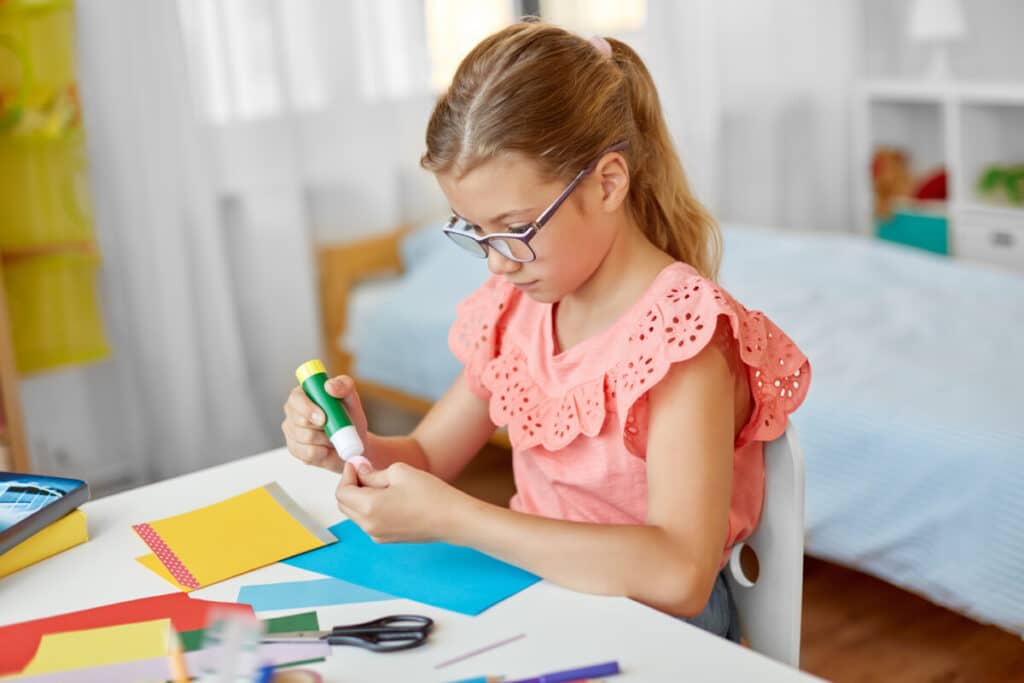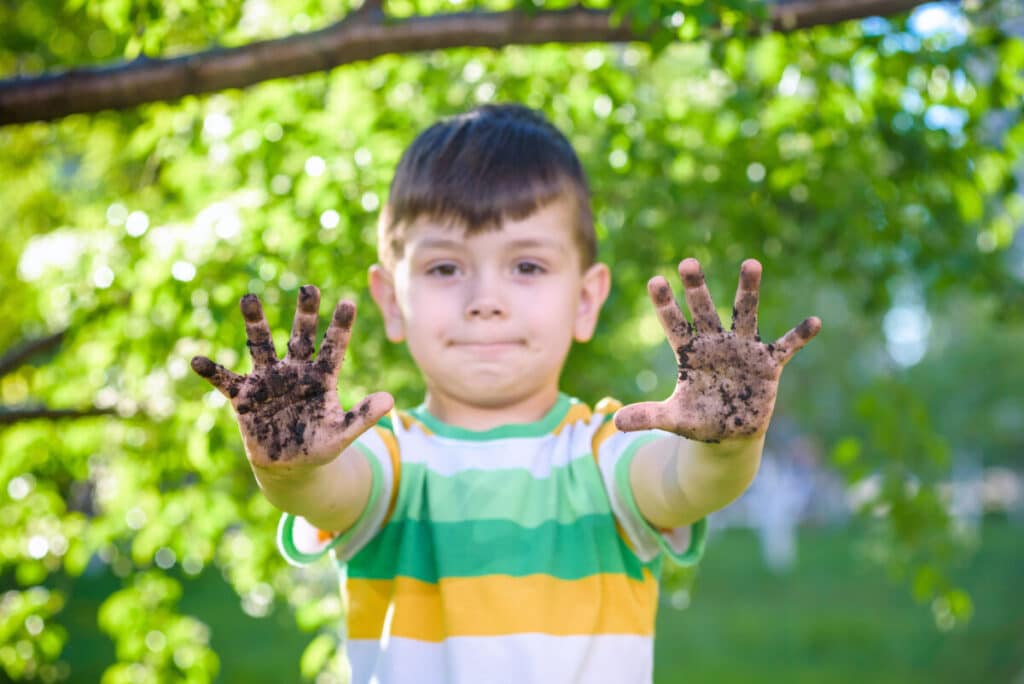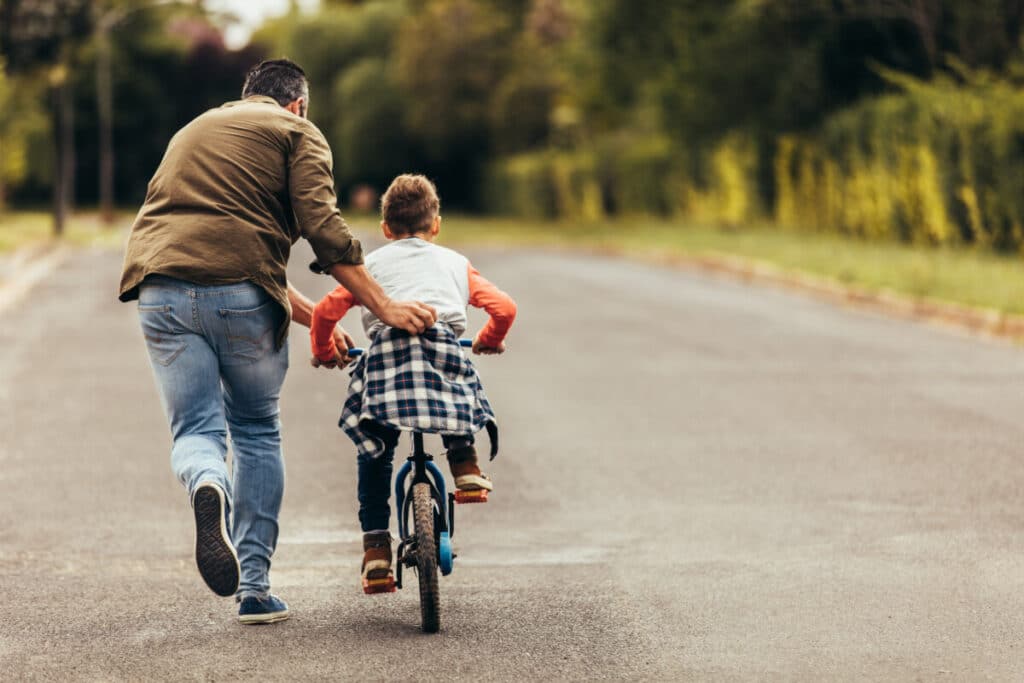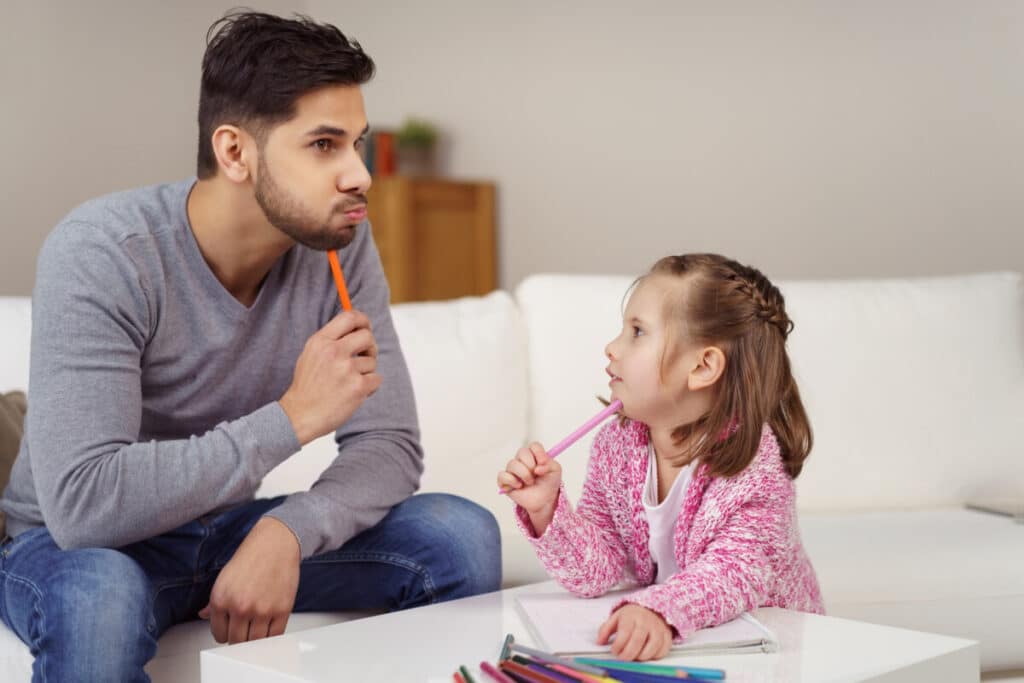21 Fun Activities Parents Can Do With Their 7-Year-Old
At seven years old, your child is ready to play and learn independently. However, as a parent, there are still plenty of opportunities for you to guide them through fun learning activities.
If you struggle to find activities your child finds fun, you’ve come to the right place. From reading to science, there are plenty of things for you to try. In this post, you’ll find 21 fun activities parents can do with their seven-year-olds. Let’s get started.
1. Memory Game
At seven years old, your child begins to explore their competitive nature. Parents can introduce the aspect of competition in simple ways, such as memory games. Not only do memory games teach them to have a competitive spirit, but it refines your child’s critical thinking skills.
All you need for a memory game is a deck of cards. While you could purchase a deck made for the memory game, any regular deck of cards will do. Consider using only face cards for the first few rounds of memory. Slowly introduce other cards when your child needs more of a challenge.
2. Friendship Bracelets
According to Miss Natalie and Ms. Tara, preschool teachers in Idaho Falls, Idaho, friendship bracelets are an excellent craft to introduce to your seven-year-old.
This activity gives your child a chance to practice their fine motor skills and learn about selflessness. While they may want to keep the bracelets for themselves, encourage them to give the bracelet to a friend at school. This activity also reinforces the aspect of sharing and being social.
3. DIY Stethoscope
Every seven-year-old loves to learn a bit more about science. One simple science project you can do is make a homemade stethoscope. Doctors use stethoscopes to listen to their patients’ heartbeats and breathing rhythms.
You’ll need two funnels, clear plastic tubing that fits on the end of the funnel, balloons, and electrical tape to make your stethoscope.

Cut off the top of the balloon and pull it tight over both funnels’ mouths. Use the electrical tape to secure the balloon in place. Connect the two funnels with your tubing. Use tape if necessary. Voila! You now have your very own stethoscope.
Craft courtesy of Fantastic Fun and Learning.
After making the stethoscope, make sure you explain the science behind this device to your child. A stethoscope amplifies sounds by trapping the sound waves in a small area. The sound waves echo down the tube until they finally reach your ear.
4. Read a Book
Parents must read with their children. Without the help of a parent, a young child could fall behind in reading very quickly.
Take the time to read a book to your seven-year-old. Or better yet, have your child read a book to you. Regardless of what you do, let your child choose the book.
Parents should add reading with their children to their daily routine. Additionally, parents should encourage their children to try reading independently from time to time. Visit a book store or the library and let them choose several books to read through.
5. Hopscotch Math
At this age, your child is also learning simple math. With some parent reinforcement, a child can excel in mathematics.
Draw a hopscotch board on your driveway or sidewalk. Have your child write a number in each of the squares. Once the board is set up, call out a simple math equation and have your child hop to the square with the answer written in it.
While you should start with simple addition and subtraction, you can use this activity with multiplication and division when your child is ready. This is a fun activity to keep your child active and learning for years to come.
6. Swimming
Miss Natalie and Ms. Tara suggest that parents take their seven-year-olds swimming because it forces them to use both sides of their brains. Additionally, swimming is a social activity, not to mention the fact that it’s fun.
It’s never too early to teach your child to swim. Find swim lessons for your child at the local pool. Your child will enjoy the opportunity to be active and play in the water.
7. Make a Scrapbook
Scrapbooking has unfortunately become a thing of the past. With the invention of smartphones, many choose to organize photos of their children into electronic folders. However, there’s something magical about having a tangible scrapbook to flip through. Even better, have your child help you make their scrapbook. They can help organize some of the current photos you have and design pages for future life events such as turning 16, graduating high school, and so much more.

Visit your local craft store to purchase a scrapbook, some stickers, stamps, and other materials. Print out some of your favorite photos and get your child involved. Building a scrapbook with your child is a guaranteed happy memory. You could even include a picture of the event in your scrapbook!
8. Make Ice Cream
As mentioned earlier, seven-year-olds love learning more about science; however, they’ll love it even more if it includes making—and eating—a sweet treat.
Making ice cream is extremely simple and fun. To do this you’ll need a few gallon and sandwich-sized zip lock bags, rock salt, ice, cream, vanilla, sugar, and your favorite flavoring.
Mix the cream, vanilla, sugar, and flavoring in a sandwich zip lock bag and seal it well. You may consider double bagging the mixture to prevent leaks. In a gallon zip lock bag, add the ice and rock salt. Toss your bag of ice cream mix into the larger bag filled with ice. Seal the bag and shake it or roll it until your ice cream has thickened.
This science experiment is guaranteed to keep your children involved and excited.
9. Painting Rocks
If your child is an aspiring artist, you may consider purchasing canvases for them to use. However, canvases can get expensive. Channel your child’s artistic abilities towards a smaller, cheaper project such as painting rocks.
Not only will this give them a unique way to follow their creative habits, but it teaches them to focus on the minute details of their painting. This could improve their artistic abilities from a very young age.
10. Make Mud Bricks
You’re never too old to play in the mud. That’s why making mud bricks is the perfect activity for parents to do with their seven-year-old. Making mud bricks is like playing with all-natural legos.

To make mud bricks, you’ll need a mold that you don’t mind getting dirty. This could be an ice cube tray or muffin pan.
Mix a cup of dirt with 2/3 cup of water and then pack it into the mold. Let the mud dry and then carefully remove your bricks from the mold. You and your child now have the materials to build as you please. For bigger projects, make multiple batches of mud bricks using these same proportions.
Mud recipe courtesy of Education.com.
11. Puzzling
Miss Natalie and Ms. Tara say that puzzles are an activity that both parents and young children can enjoy doing together. Putting together a puzzle encourages your child to focus on smaller details. It also requires them to use their fine motor skills when moving and placing pieces.
Because your child is still young, you may have to hold off on completing a 1,000 piece grizzly bear-shaped puzzle. Start with a simple rectangular-shaped puzzle with 100 pieces or so. As your child progresses, you can start working on more complex puzzles.
12. Field Day
Set up a field day with your child and have events such as a water balloon toss and an egg race. These activities get both you and your child outside and exercising.

An egg race helps teach your child about balance while a water balloon toss is a fun way to practice throwing and catching.
13. Build a Solar Oven
It’s common knowledge that the sun produces heat. However, your seven-year-old may not realize just how warm the sun can get. Teach your child about how to harness the heat of the sun by building a solar oven.
You’ll need the following for this project:
- A cardboard box and lid
- Aluminum foil
- Plastic wrap
- Tape
- A stick
- A ruler
Watch how to make your solar oven in the following video!
Like all other science projects, make sure you explain what’s happening to your children. Using a scientific notebook is a great way to keep them focused and learning.
14. Hide and Seek
Hide and seek is a classic game for small children to play. Don’t write this game off as too simple for a parent to enjoy. When looking for your children, take a little extra time to find them. Casually pick up toys as you search for them. You’ll get some quiet time to do some minor cleaning, and your children will think that they’ve found a clever hiding spot.
You can alter the rules to make the game more interesting. For example, in the sardines version of the game, only one person hides. The rest of the group starts looking for them individually. When a person finds the “hider” they cram into the same hiding spot too—hence the name sardines. Even adults can enjoy this version of the game.
15. Play-Doh
Using Play-Doh or another brand of modeling clay is a fun, relatively mess-free activity you and your seven-year-old can participate in. Better yet, this simple project comes recommended by Miss Natalie and Ms. Tara. According to these teachers, this activity uses fine motor functions and sponsors creativity.
You can take this activity one step further by making some Play-Doh of your own! Follow along in the video below.
This Play Dough recipe is perfect for young children since it is non-toxic.
16. Make Paper Chains
Arts and crafts are the perfect activity for young children and their parents to do together. When making paper chains, make sure your child uses safety scissors.
This craft is perfect for all seasons and holidays. Use this as an opportunity to make decorations for an upcoming event. For example, you can make a paper heart chain for Valentine’s day or pine trees for Christmas.
17. Chores
Kids have fun doing chores with their parents, occasionally. If your child is in the cleaning mood, involve them in your daily chores. This teaches them responsibility and can make your job a bit easier!
One task especially good for young children is sorting dirty laundry into color piles. This chore teaches them about good laundry practices as well as sorting by color.
18. Baking
In addition to doing chores, seven-year-olds want to help their parents with activities such as baking. Miss Natalie and Ms. Tara suggest letting your child help you in the kitchen. You could even use this activity as an opportunity to teach about the science behind baking.
19. Learn to Ride a Bike
Most seven-year-olds are starting to break away from their training wheels and are ready to learn to ride a bike. This process is best completed with the help of a parent.

Involve your child in every step of the process. This means giving them a wrench or screwdriver and letting them help you remove (or lift) the training wheels.
Run alongside them until they master their balance and then let them do it on their own. Once your seven-year-old masters riding a bike, you can start going on family bike rides.
20. Tag
Tag is another simple game that young children enjoy playing, even with their parents.
Miss Natalie and Ms. Tara suggest playing different types of tag to keep the game interesting for older players. For example, play freeze tag, team tag, or bandit tag. You and your child could even come up with the rules for a new type of tag.
21. Dress Up
Every child loves playing dress-up. As a parent use dress-up as an opportunity to teach your child about matching their clothing. This game can help your child learn valuable life skills.
After playing this game a few times, let your child start dressing themselves every day. They’ll appreciate the independence and you’ll appreciate having less to do in the mornings.

